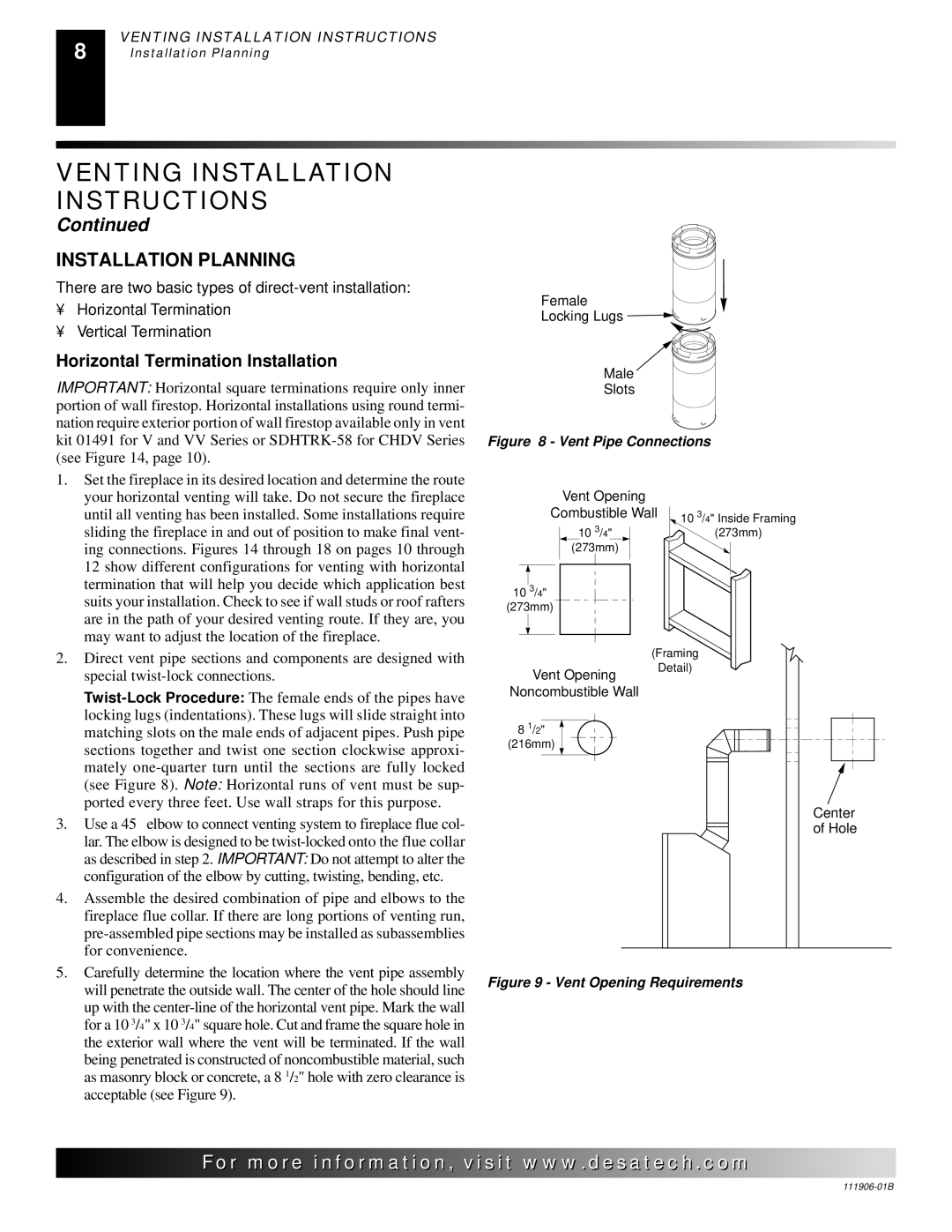CHDV42NRA, (V)V42PA(1) specifications
Desa CHDV42NRA and (V)V42PA(1) represent a line of advanced heating solutions that embody efficiency, comfort, and modern technology. Designed to meet the demands of contemporary living spaces, these heating systems integrate advanced engineering with user-friendly features, making them ideal for various residential settings.The main feature of the Desa CHDV42NRA is its innovative heating efficiency. It utilizes a high-capacity burner system that ensures optimal fuel consumption while delivering rapid warmth. With a heat output of 42,000 BTUs, it is capable of heating large spaces effortlessly. Its design also prioritizes safety, equipped with an automatic shut-off mechanism that engages in abnormal operating conditions. This feature ensures peace of mind for users, knowing they are protected against potential risks.
In terms of technology, the Desa (V)V42PA(1) stands out with its modern thermostat integration. This allows homeowners to set their preferred temperatures easily, enhancing comfort levels while conserving energy. The system can be connected to smart home devices, enabling remote control through smartphone applications. Users can adjust settings, monitor performance, and even schedule heating cycles to fit their daily routines, maximizing efficiency.
Another characteristic worth noting is the dual-fuel capability featured in both models. This flexibility allows users to choose between propane and natural gas, making it adaptable to different fuel sources depending on availability and cost. The versatility contributes to reduced operating costs while ensuring a steady supply of heat, regardless of external conditions.
Ease of maintenance is another aspect where the Desa CHDV42NRA and (V)V42PA(1) excel. With accessible design features, routine checks and upkeep are simplified, reducing downtime and ensuring optimal performance. The aesthetic appeal of these units, with sleek, contemporary designs, means they can blend seamlessly into varied interior decors, enhancing the overall ambiance of the living space.
In conclusion, the Desa CHDV42NRA and (V)V42PA(1) embody a perfect balance of efficiency, technology, safety, and user-friendliness. They are ideal for homeowners looking for reliable heating solutions that adapt to their lifestyle while maintaining an eco-friendly approach. With these models, users benefit from enhanced comfort without compromising on cost-effectiveness or sustainability.

